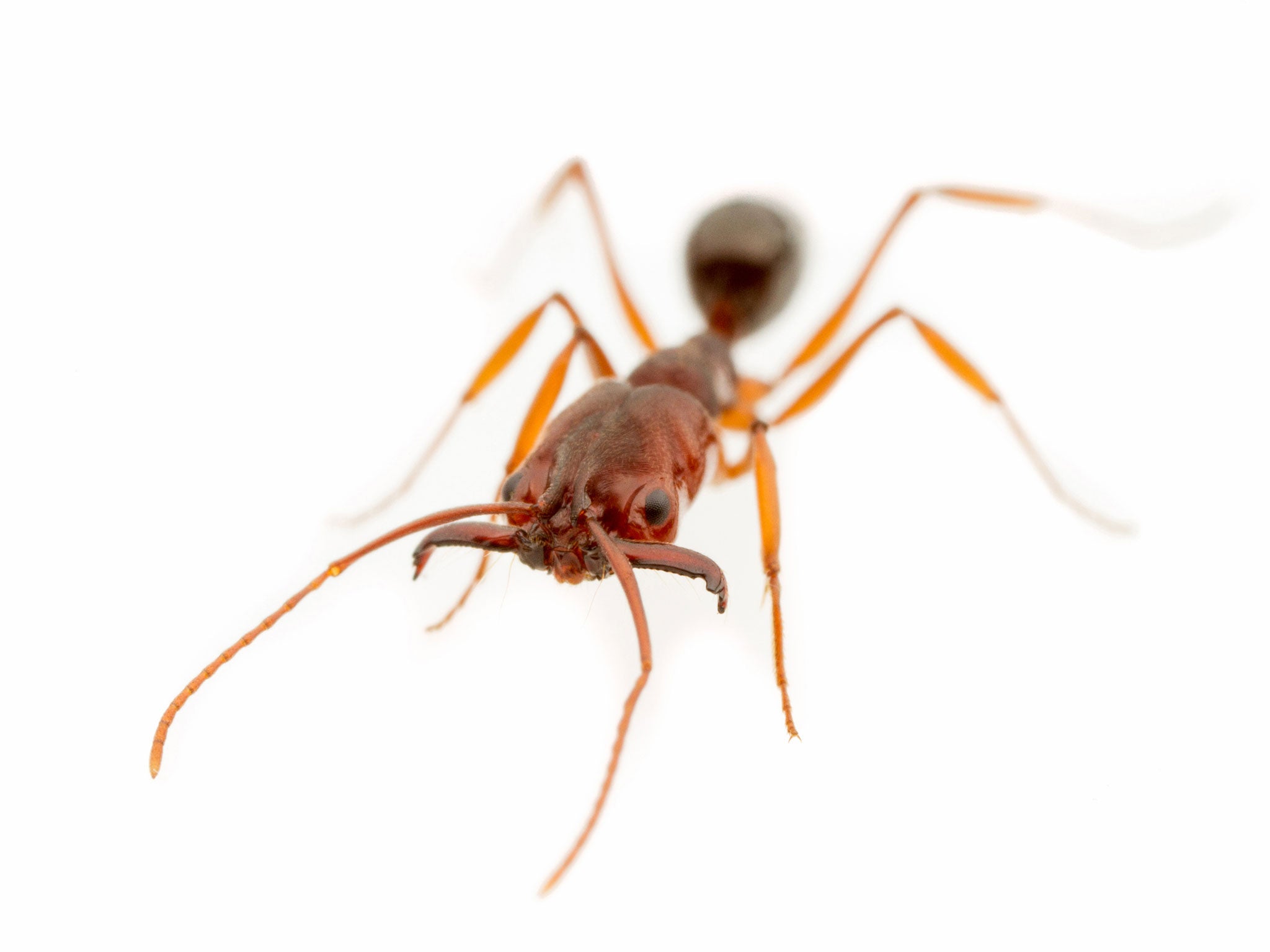Venomous trap-jaw ants 'invading' US Gulf Coast 'without scientists noticing'
The ants, which have jaws powerful enough to fling themselves in the air, may have been hiding in the US for 50 years

Your support helps us to tell the story
From reproductive rights to climate change to Big Tech, The Independent is on the ground when the story is developing. Whether it's investigating the financials of Elon Musk's pro-Trump PAC or producing our latest documentary, 'The A Word', which shines a light on the American women fighting for reproductive rights, we know how important it is to parse out the facts from the messaging.
At such a critical moment in US history, we need reporters on the ground. Your donation allows us to keep sending journalists to speak to both sides of the story.
The Independent is trusted by Americans across the entire political spectrum. And unlike many other quality news outlets, we choose not to lock Americans out of our reporting and analysis with paywalls. We believe quality journalism should be available to everyone, paid for by those who can afford it.
Your support makes all the difference.An aggressive species of trap-jaw ant have managed to quickly expand their territory across the Gulf Coast of the US “without anyone noticing”, researchers have found.
The Odontomachus haematodus are a species of hunting trap-jaw ants with venomous stings and jaws powerful enough to fling themselves through the air.
They are typically found in South America, but are now spreading into new territory in southeastern America, scientists at the North Carolina State University, the Mississippi Entomological Museum, the University of California, Davis and Archbold Biological Station have reported.
The haematodus has proved particularly intriguing for the researchers out of the Odontomachus genus, because it is larger and more aggressive than other types of trap-jaw ants in the US.
Magdalena Sorger, a doctoral student at North Carolina State University, said: "The fact that some of these species are spreading is interesting, in part because these giant ants have managed to expand their territory without anyone noticing.
"We know very little about these ants, including how they interact with native ant species in the areas they're invading."
The species was first unofficially recorded in Alabama in 1956. But the researchers found it has now spread across the Gulf Coast, at least as far east as Pensacola, Florida.
Sorger has confirmed a record of ruginodis more than a hundred miles north of Orlando, in Gainesville. She added: “The species could have travelled even farther than Gainesville, but no one has looked for it.”
The study, ‘A review of the Nearctic Odontomachus (Hymenoptera: Formicidae: Ponerinae) with a treatment of the males,’ has been published in the journal Zootaxa.
Join our commenting forum
Join thought-provoking conversations, follow other Independent readers and see their replies
Comments